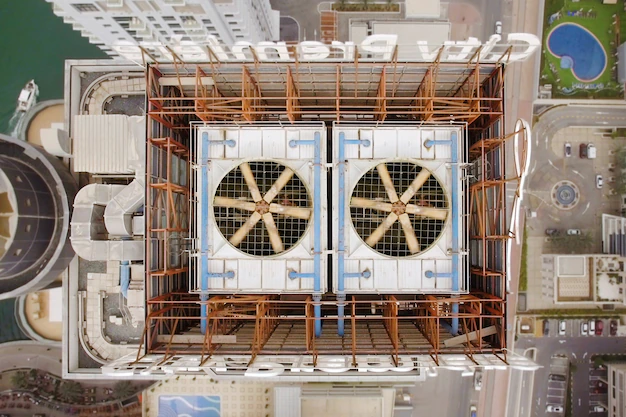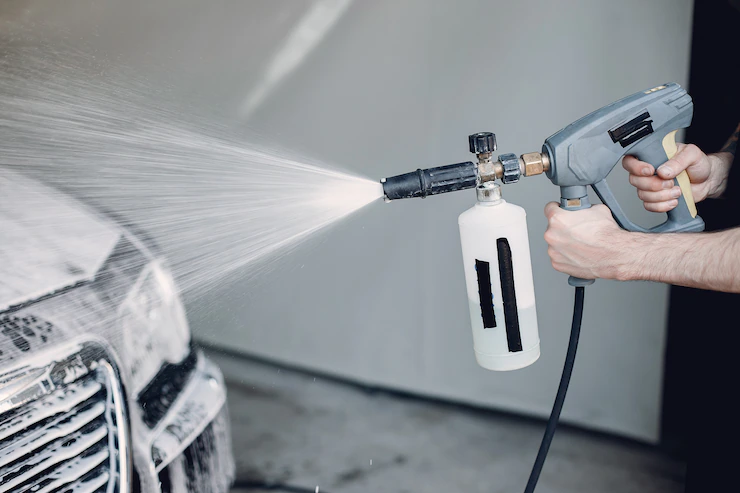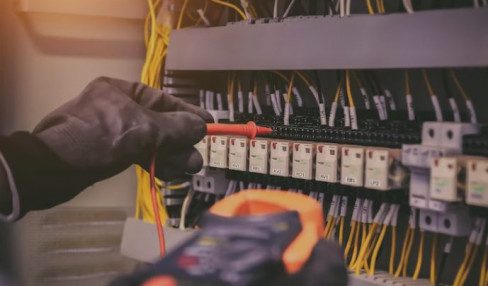Decentralized Mechanical Ventilation With Heat Recovery: A Complete Guide
5 Mins Read
Published on: 25 October 2023
Last Updated on: 20 December 2024

- Decentralized Mechanical Ventilation Explained
- The Role Of Heat Recovery
- Significance of Heat Recovery
- Heat Recovery Mechanism
- Benefits Of Decentralized Mechanical Ventilation
- Energy Efficiency
- Improved Indoor Air Quality
- Zoning And Control
- Reduced Ductwork And Installation Costs
- Components Of Decentralized Mechanical Ventilation Systems
- Installation And Maintenance
- Installation Process
- Maintenance Guidelines
- What Experts Have To Say?
In building designs, decentralized mechanical ventilation is an innovative approach to indoor air quality and energy efficiency.
Unlike traditional centralized systems, which rely on a single unit, decentralized ventilation uses multiple individual units, each serving specific areas or rooms.
These autonomous units distribute fresh outdoor air and exhaust stale indoor air while incorporating heat recovery technology to transfer heat from the outgoing air to the incoming fresh air, reducing energy consumption.
This approach offers precise control, enhanced indoor air quality, and adaptability for different spaces, making it a compelling choice for sustainable and energy-efficient building ventilation.
This complete guide will delve into decentralized mechanical ventilation systems’ concept, benefits, components, installation, and maintenance.
Decentralized Mechanical Ventilation Explained
Decentralized mechanical ventilation is an advanced approach to building ventilation, particularly for maintaining indoor air quality and energy efficiency.
In contrast to traditional centralized ventilation systems that rely on a single central unit to circulate air throughout a structure, decentralized mechanical ventilation involves multiple individual units, each serving specific areas or rooms.
These decentralized units operate autonomously, distributing fresh outdoor air while exhausting stale indoor air.
A vital feature of this approach is the integration of diver technology, where heat exchangers within the units transfer heat from the outgoing, stale indoor air to the incoming, fresh outdoor air.
This heat recovery process significantly reduces the energy required for heating or cooling the building, making decentralized mechanical ventilation an environmentally responsible and cost-effective solution.
It offers enhanced control, adaptability, and improved indoor air quality, making it an increasingly popular choice for modern, energy-efficient building designs.
The Role Of Heat Recovery
Heat recovery is a pivotal component in the decentralized mechanical ventilation system, crucial to its overall energy efficiency and sustainability.
This process involves capturing and transferring heat from the outgoing indoor air to the incoming fresh outdoor air, reducing the energy required for heating or cooling a building.
Here, we delve into the significance and mechanisms of heat recovery in decentralized mechanical ventilation.
Significance of Heat Recovery
Heat recovery addresses two fundamental objectives within the decentralized mechanical ventilation system.
- Firstly, decentral ventilation enhances energy efficiency by reusing the thermal energy already present in the indoor air before it is exhausted.
- Secondly, it ensures a comfortable indoor temperature by reducing the demand for heating or cooling, thus promoting sustainability.
Heat Recovery Mechanism
Heat recovery units integrated into decentralized ventilation systems facilitate the efficient heat transfer between the outgoing and incoming air streams. However, this process typically involves the following steps:
- Heat Exchanger: The heart of the heat recovery system is the heat exchanger. As a result, it consists of two separate air channels: one for the outgoing indoor air and the other for the incoming outdoor air. However, these channels are closely aligned but are physically separated to prevent cross-contamination of the air streams.
- Heat Transfer: The heat exchanger captures thermal energy as the warm indoor air is exhausted. Simultaneously, the incoming outdoor air passes through the second channel and picks up this captured heat.
- Energy Exchange: The heat recovery unit facilitates an efficient exchange of thermal energy between the outgoing and incoming air. As a result, this process allows the indoor air’s warmth to be preserved and used to preheat the fresh outdoor air during the colder months. Conversely, the heat recovery unit can cool the incoming air in warmer conditions by transferring the heat to the outgoing air.
Benefits Of Decentralized Mechanical Ventilation
Decentralized mechanical ventilation systems offer a range of benefits for both residential and commercial buildings:
Energy Efficiency
The heat recovery process in these systems leads to reduced energy consumption, resulting in lower utility bills and a smaller carbon footprint.
Improved Indoor Air Quality
By continuously supplying fresh outdoor air to individual spaces, decentralized systems help maintain superior indoor air quality, which is essential for occupant health and comfort.
Zoning And Control
Decentralized systems allow for better ventilation control in various areas, enabling customized solutions to meet specific needs.
Reduced Ductwork And Installation Costs
The absence of extensive ductwork reduces installation costs and minimizes disruptions during retrofitting or new construction.
Components Of Decentralized Mechanical Ventilation Systems
- Ventilation Units: These are the heart of the system. Hence, one can find such installations in each room or area that requires ventilation.
- Ductwork (if required): Some systems may include short ducts to facilitate fresh air distribution and indoor air exhaust.
Installation And Maintenance
Installation Process
- Assessment: Start with thoroughly evaluating the building’s ventilation needs and layout.
- Unit Placement: Identify the most suitable locations for the ventilation units, considering factors like occupancy patterns and air distribution.
- Ductwork (if required): If your system involves ductwork, ensure it is installed correctly to facilitate air circulation.
- Electrical and Controls: Set up each unit’s electrical connections and controls, allowing for autonomous operation.
- Testing: Conduct comprehensive tests to ensure that each unit functions correctly and that the heat recovery process is effective.
Maintenance Guidelines
- Regular Filter Replacement: You must replace the filters per the manufacturer’s recommendations once in a while. This will maintain air quality.
- Heat Exchanger Cleaning: Periodically clean the heat exchangers to ensure efficient heat recovery.
- Check Fan Performance: Inspect and maintain fan performance to ensure proper air exchange.
- Monitor Controls: Regularly check and calibrate the controls for optimal ventilation and energy efficiency.
- Professional Service: Schedule professional servicing to address complex issues and maintain the system’s longevity.
What Experts Have To Say?
Experts in building ventilation and sustainability laud the concept of decentralized mechanical ventilation. It is usually done with heat recovery as a significant leap forward. Hence, it addresses the dual challenges of indoor air quality and energy efficiency.
By decentral ventilation and incorporating heat recovery technology, this approach offers tailored solutions for each area within a building. Subsequently, optimizing energy consumption and creating a comfortable indoor environment.
The ability to capture and reuse thermal energy is especially commendable, as it reduces the carbon footprint and leads to substantial cost savings.
Experts view decentralized mechanical ventilation as a promising solution in the ongoing quest for greener and more sustainable building designs, with its potential to contribute to a healthier, more energy-efficient future.
Read Also:


















Comments Are Closed For This Article